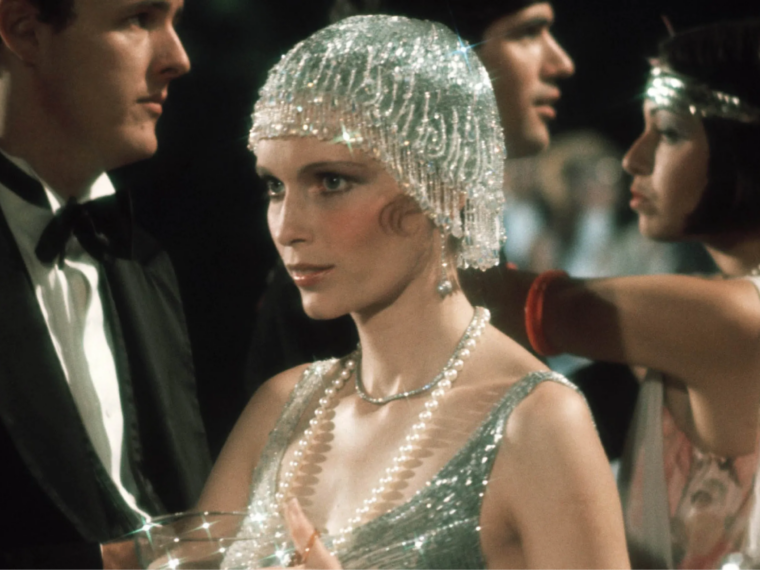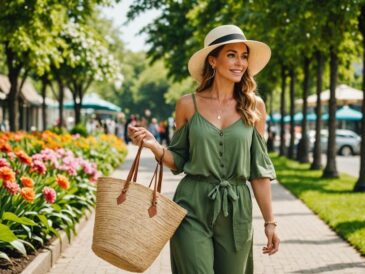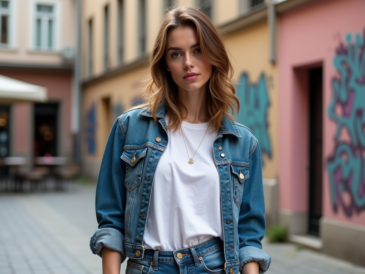Fashion in literature is as vital as the narrative itself, often painting a vivid picture of the character and their world. Throughout literary history, certain characters have stood out not just for their compelling stories but also for their iconic styles. This article delves into the intricate relationship between fashion and literature by exploring how some of the most memorable book characters express themselves through their attire.
The Victorian Elegance of Jane Eyre

Charlotte Brontë’s classic novel “”Jane Eyre”” presents a protagonist whose fashion sense speaks volumes about her character and place in society. The titular character, Jane Eyre, often adorns herself in modest, unassuming garments, reflecting her humble beginnings and inner strength. The simplicity of her attire contrasts sharply with the extravagant wealth and superficiality of other characters, highlighting her moral superiority and steadfastness.
Despite her plain dress, Jane’s evolving wardrobe mirrors her journey towards self-respect and independence. From her austere childhood at Gateshead to her more refined, yet still modest, wardrobe choices as she takes up her role as a governess, every piece of clothing Jane wears is a testament to her resilience and integrity.
The Glamorous Gatsby: Fashion in “”The Great Gatsby””
F. Scott Fitzgerald’s “”The Great Gatsby”” is synonymous with the Roaring Twenties’ glitz and glamour. The characters’ fashion in this novel is an embodiment of the era’s opulence. Jay Gatsby, in particular, is characterized by his extravagant wardrobe that reflects his newfound wealth and desire to fit into higher societal circles.
Gatsby’s iconic pink suit is not just a symbol of his wealth but also a representation of his romantic idealism and his unrelenting pursuit of Daisy Buchanan. It contrasts with the more subdued tones worn by characters like Nick Carraway, emphasizing Gatsby’s larger-than-life persona and the novel’s underlying theme of the American Dream’s seductive, yet ultimately hollow, nature.
The Distinctive Styles in “”Harry Potter””
J.K. Rowling’s “”Harry Potter”” series is replete with characters whose styles are as magical as the world they inhabit. From the elegant robes of Hogwarts professors to the raggedy clothes of house-elves, each character’s fashion is painstakingly described to enhance their identity and role within the story.
-
Hermione Granger:
Known for her practical and sometimes bookish wardrobe, Hermione’s style evolves from school uniforms to more sophisticated dresses and casual wear, mirroring her journey from a young student to a confident activist. -
Albus Dumbledore:
The headmaster’s flamboyant robes, often described in rich detail, symbolize his eccentricity and wisdom. -
Draco Malfoy:
Typically adorned in pristine, fine clothing, Malfoy’s style underscores his privileged upbringing and the darker influences of his family.
These distinct styles are not mere embellishments but integral to the characters’ identity and development throughout the series.
The Timeless Style of Elizabeth Bennet
Jane Austen’s “”Pride and Prejudice”” features Elizabeth Bennet, a character whose fashion sense beautifully encapsulates her personality. Elizabeth’s attire is always appropriate, reflecting her practicality, intelligence, and a sense of independence that defies the conventional expectations of her time.
Her outfits, while modest, are described as fitting perfectly, indicating her strong sense of self-worth and confidence. Elizabeth’s fashion choices are a direct commentary on the societal norms of the Regency era, with her simple yet elegant style highlighting her refusal to conform entirely. Her clothes are a form of quiet rebellion against the superficiality and materialism that surround her.
The Edgy Aesthetic of Lisbeth Salander
Stieg Larsson’s “”Millennium”” series introduces us to Lisbeth Salander, a character whose unconventional style is as piercing as her intellect. Lisbeth’s fashion sense, with its punk influences, leather jackets, and multiple piercings, is a bold statement of her nonconformity and fierce independence.
Her clothing serves as armor, protecting her from a world that has often been harsh and unforgiving. This dynamic illustration of fashion in literature showcases how a character’s style can be a powerful tool for storytelling, revealing hidden layers of their personality and background.
Conclusion
Fashion in literature is far more than just a visual element; it is a profound means of characterization and symbolism. Through their unique styles, iconic book characters like Jane Eyre, Jay Gatsby, Hermione Granger, Elizabeth Bennet, and Lisbeth Salander communicate aspects of their identity, their social environment, and their personal journeys. As readers, we are often drawn into their stories not just by their actions and words, but by the intricate details of their attire that reveal so much more about who they are.
FAQs
What role does fashion play in literature?
Fashion in literature serves as a powerful tool for characterization and symbolism, providing insights into a character’s social status, personality, and emotional state.
Which literary character is noted for their glamorous fashion?
Jay Gatsby from F. Scott Fitzgerald’s “”The Great Gatsby”” is renowned for his glamorous and extravagant wardrobe that reflects the opulence of the Roaring Twenties.
How does Elizabeth Bennet’s fashion in “”Pride and Prejudice”” reflect her character?
Elizabeth Bennet’s fashion in “”Pride and Prejudice”” is modest yet elegant, reflecting her practicality, intelligence, and independence, as well as her subtle rebellion against societal norms.
What does Lisbeth Salander’s style symbolize in the “”Millennium”” series?
Lisbeth Salander’s edgy, punk-influenced style in the “”Millennium”” series symbolizes her nonconformity, independence, and serves as a form of armor against a harsh and unforgiving world.
Can fashion in literature evolve along with the character?
Yes, literary characters’ fashion can evolve throughout the story, reflecting their personal growth, changing circumstances, or shifts in their inner world, as seen in characters like Hermione Granger in the “”Harry Potter”” series.





